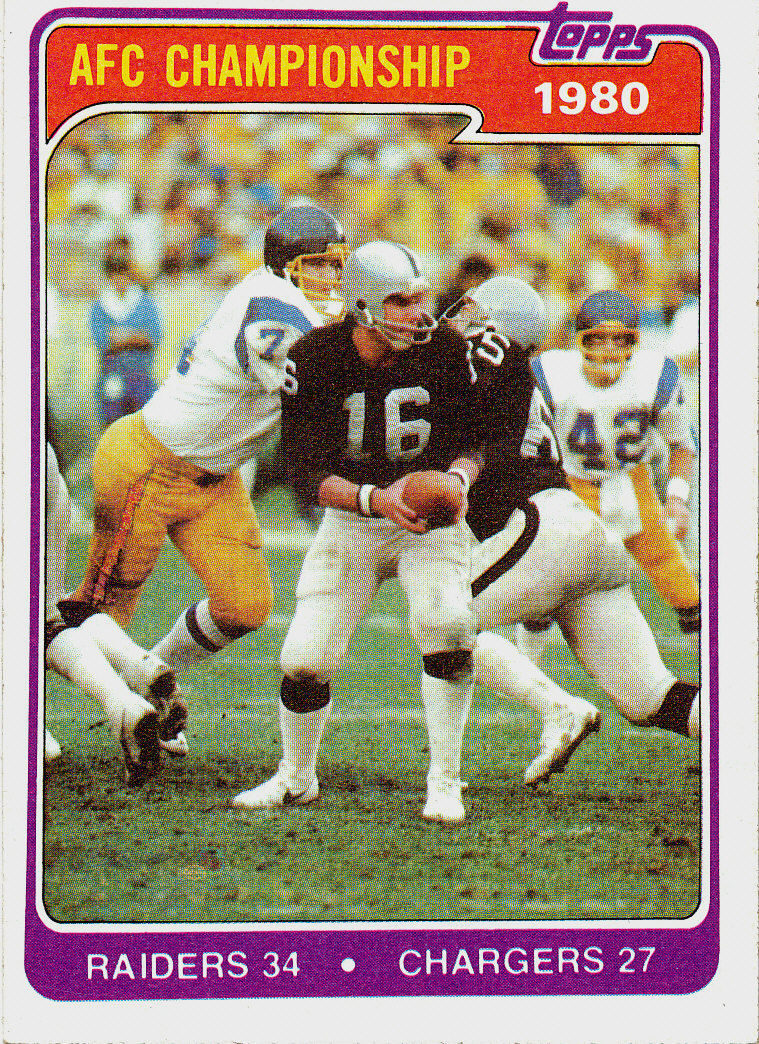I had just gotten done throwing a theory out to my cousin Rich, an occasional contributor to this site, about how the 2016 Vikings bore some resemblance to the 1980 Raiders. Just then I heard a producer on 1500 ESPN radio in the Twin Cities theorize that newly acquired QB Sam Bradford may be in a similar situation as Jim Plunkett was during that season 36 years ago.
It’s not an apples-for-apples comparison. Plunkett had already been on the Raiders’ roster in 1979, though he threw just 15 passes. He was backing up Dan Pastorini, who had become Oakland’s QB when Ken Stabler was moved to Houston.
But Plunkett had struggled for eight seasons on mostly bad teams to live up to expectations after entering the NFL as the top pick in the 1971 draft. That’s similar to the path Bradford has been on. He was rookie of the year after being the top pick in 2010, but then tore up his knee twice and has since struggled to find the right fit. (He missed the entire 2014 campaign with a torn ACL, his second in as many seasons.)
I wasn’t alive for the first few years of Plunkett’s career, so I can go only by what I’ve read. But, though the Raiders were in a bit of a reloading mode in 1980, following tremendous success through the 1970s, it seems pretty clear that by joining Oakland in 1979, he was now on a roster that had the best skill talent, both offensively and defensively, that he’d ever been around as a pro. Cliff Branch, Lester Hayes, Ted Hendricks, Art Shell, Gene Upshaw, etc.
So, when Pastorini went down with a broken leg in the fifth game of the season, and Plunkett came on in relief, he didn’t have to do it all. If he could manage games, avoid mistakes, and make the occasional big play, he’d give the Raiders a chance to fare well most Sundays. What followed was an unspectacular-but-very-solid run at QB. He completed just over half his passes for 2,299 yards and 18 TDs against 16 INTs. The Raiders finished 9-2 to post an 11-5 record, and the team went on to become the first wild card team to win the Super Bowl.
Bradford wasn’t on the Vikings’ roster when training camp began – probably not even on GM Rick Spielman’s radar. But he was, at a huge price, an understandable target once starter Teddy Bridgewater went down with a knee injury. He’s known as having a solid arm with good accuracy. By some accounts, he throws well on the run and is a good play action passer. He doesn’t throw a lot of interceptions, as evidenced by his Plus-26 TD-to-INT ratio through his first five seasons, many of which have been injury-plagued.
And he comes to Minnesota, where, like Plunkett, he is surrounded by skill talent on offense like Adrian Peterson and Stefon Diggs and he’s helped out by a young, star-studded defense that can win games by itself if it’s not encumbered by bad field position and an inept offense.
In other words, Sam Bradford does not need to be great to lead the Vikings to great things or to, potentially, resurrect his career in Plunkett-like fashion.
Plunkett went on to become the on-again, off-again starter for Oakland for another six seasons after that magical 1980 run. He won another Super Bowl in 1984. His career stats, both overall and during his tenure with the Raiders, are somewhat pedestrian, but he’s proof that if a QB lands in the right spot and gets the right opportunity, reclamation is possible.
Several media accounts indicate that Bradford is taking most of the first-team snaps for the Vikings this week. So it looks like he’s going to get a shot, starting this week, at rebuilding his stock as an NFL starter in much the same way Plunkett did in 1980. Minnesota fans, players and team execs would have to be thrilled if Bradford and the Vikings can enjoy similar individual and team success over the next season or five coming in as the unexpected heir to Bridgewater as Plunkett and the Raiders did from that unexpected marriage in the early 1980s.


I cannot remember Andy P where a QB rated #1 in the draft by Mel Kiper Jr, fell so far…
Brian thanks for pointing that out let’s not forget Deion ran a disaster of a school called Prime Prep Academy…
Haha ... well Andy, your anger towards Deion Sanders has some possible karma ... his big mouth might have cost…
The odds of many of these first and second round picks being busts or out of the league within six…
odds are tonight several future PFHOFers will enter the NFL-who and with which team and from which draft round are…